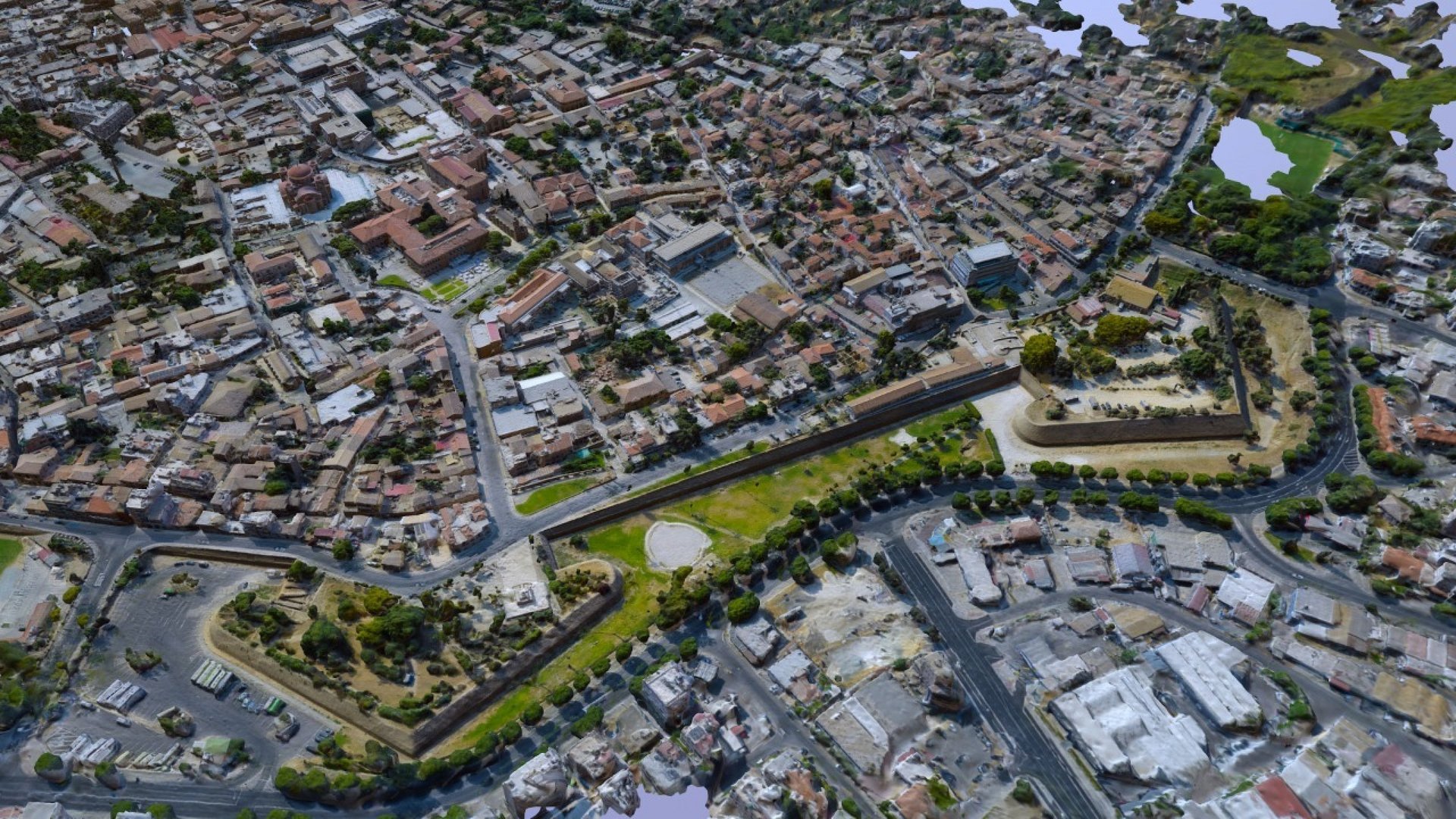At CYENS, the Research Centre of Excellence in Cyprus (formerly RISE), a team is at work creating a digital twin of the city of Nicosia.
“The digital twin offers the city of Nicosia a fantastic management tool,” explains Dr Olga Shvarova, Chief Innovation Officer at CYENS. “We are working with the Smart City initiative of Nicosia which is helping to provide the infrastructure we need.”
What can the digital twin of Nicosia offer?
“A digital twin is a versatile management tool which provides a digital replica of the city, for example to monitor the current situation, or to predict how the situation may evolve, as well as to test different intervention scenarios.” Dr Shvarova explains.
Digital Twin YouTube video is here: https://www.youtube.com/watch?v=rgZJclrlEqo
“For example, city planners can use various solutions to re-model the city’s electrical infrastructure to prepare for the transition to electric vehicles and to assess the impact against sustainability goals. Here, urban digital twins might be the best innovative instrument to guide city policy decisions with difficult-to-visualise calculations, which take into account not just buildings but locations, processes and people’s behaviour. The value lies in the ability of a digital twin to combine data from different sources to mirror the entire city, which increases and empowers human collaboration on city governance.“
A digital twin gives the user the ability to game scenarios that help to make optimal decisions. It allows different departments in the urban administration to work together, to combine data from different sources into a more comprehensive whole.
“When they decide how high a new building should be, where the shadows would fall, make decisions about traffic flow, measure the air pollution in different areas of the city, etc., the digital twin is invaluable,” Shvarova adds.
What the digital twin does is to recreate in a 3D model all the processes that traverse the city and are generated by it: It takes into account a great many factors, for example, traffic lights, crowd formation and the movement of crowds through the city, people’s habitual behaviours, recurring events happening in the city, the use of electricity within the city, traffic and street lighting we use – every process that can be modeled can be included in the digital twin.
CYENS has expertise in a number of research areas that contribute to smart city/digital twin solutions, explains Prof. Yiorgos Chrysanthou, Research Director at CYENS.
“We have expertise in internet of things, virtual and augmented reality, artificial intelligence and machine learning as well as large-scale earth observation and modelling. One example of such expertise is the virtual reconstruction of urban spaces, looking both at how to faithfully reconstruct, segment and characterise the environment as well as simulate pedestrians and other human activities,” he notes.
The Internet of Things connects the sensors together and reads the data we use from sensors placed around the city. The data that is collected from the sensors can deliver practical solution that will make Nicosia a better place to live.
“For example, there an app can be connected up to the digital twin. A user of such an app would be able to see where parking is available throughout the city,” Shvarova points out.
Traffic provides another good example. “If we have the ability to connect into traffic lights, we would be able to improve and optimise the flow of traffic, by letting the cars through faster, depending on the density of traffic in different areas. This would not only speed up the commute, it will reduce the air pollution and have a positive environmental impact.” she says.
“Even rubbish dumping can be controlled using visual sensing. For example, we can use machine learning to optimise the how and when rubbish is collected.”
However, much of the success of the digital twin initiative depends on the deployment of sensors within the Smart City infrastructure and the municipality of Nicosia has been strongly supporting this initiative.
CYENS researchers working with digital twin concept, see a digital twin as a replica of the complexity of processes, functions and interactions within a city. An implementation of a digital twin will lead to an efficient city life which means substantial savings in human effort and other resources needed to organize and run the city. It will bring together citizens and authorities to promote greater transparency and understanding of the challenges, from day-to-day issues to what may be encountered in the future. Implementing a digital twin will ultimately lead to an improved quality of life for all.
There are already plans in Paphos and Limassol to develop Smart City infrastructure, and if the smart cities of Cyprus create digital twins as well, it would allow forming an interoperable urban digital platform, a shared data ecosystem to support the development of climate-neutral and smart communities.
“The architecture of the digital twin should be platform-agnostic to allow all the data models to be shared. This makes the development of useful smart city applications shared between major cities of Cyprus possible. Such data can be accessed by a developer interested in building a smart city application via shared digital platforms,” concludes Stelios Voscos, Software Developer at CYENS.






Click here to change your cookie preferences